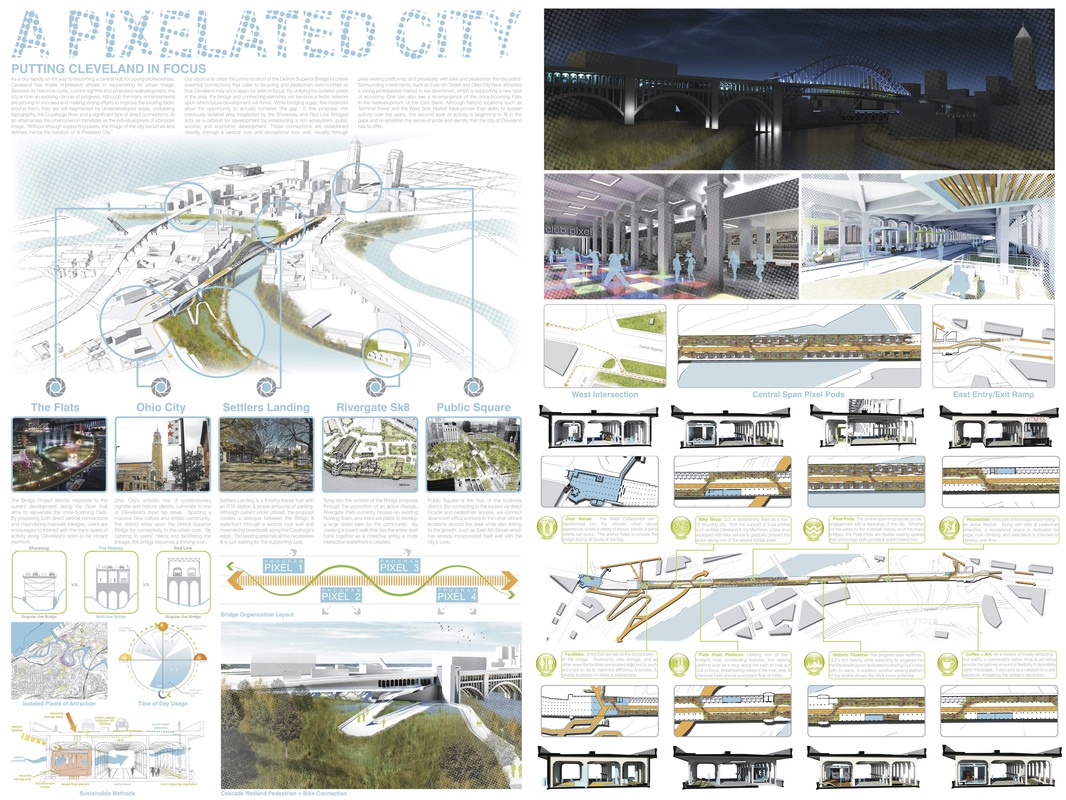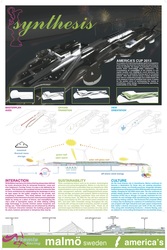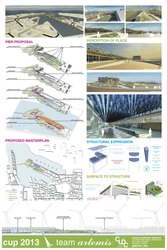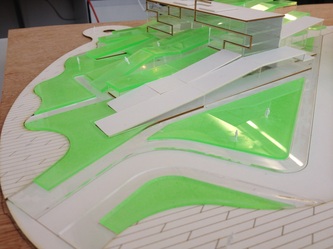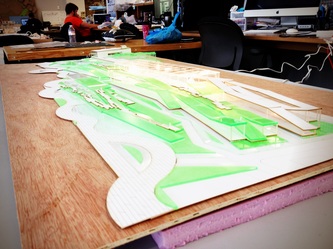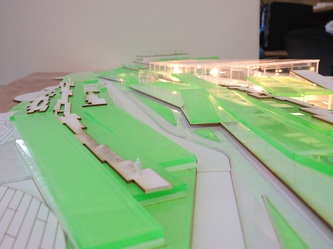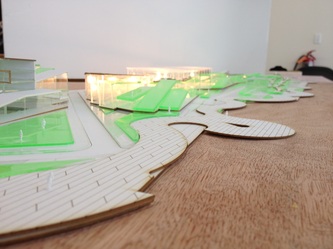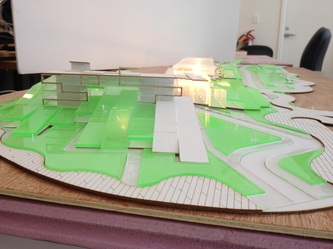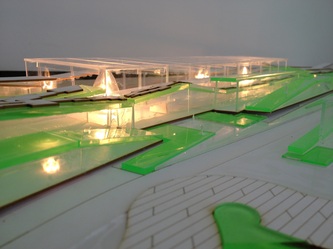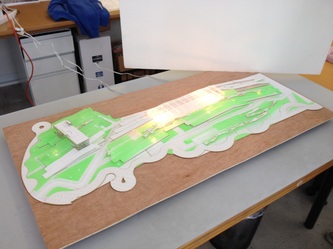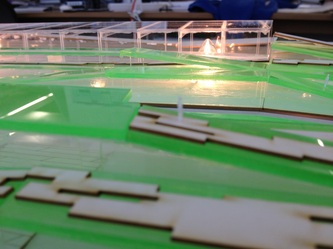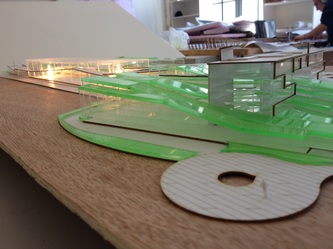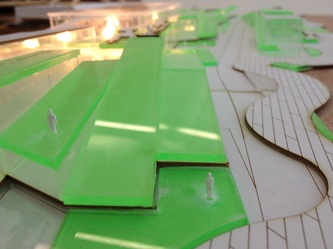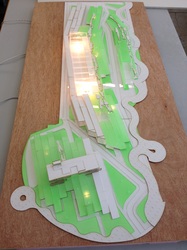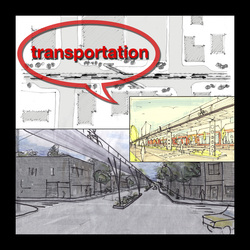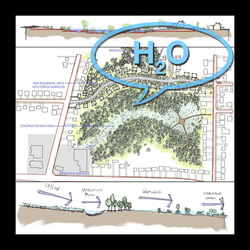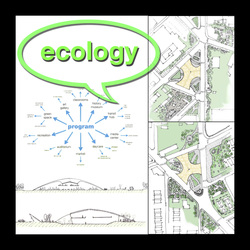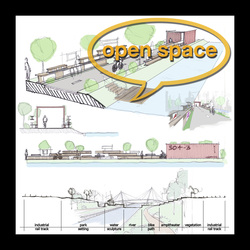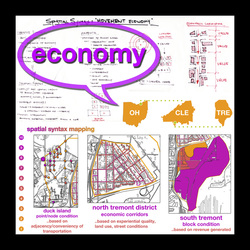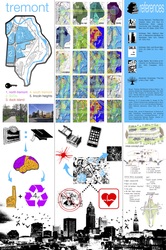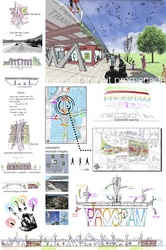urban design thesis:
This thesis project investigates the re-prioritization of existing infrastructure’s influencing factors of economics, defense, government operations and society; ultimately suggesting that infrastructure (both in the United States and globally) should become a more socially related endeavor. This shift in priority will then be explored through the eyes of professionals in design-related fields (i.e. architecture, urban design and urban planning) to see what they are able to contribute to the systematic development of specific infrastructure elements, methods, and processes that directly affect our urban environments and society as a whole. The various methodologies, characteristics, and complexities of infrastructural design and how its attributes of interdependency, resiliency and economy will be investigated so these design related professionals are able to appreciate and utilize the quantitative and analytical processes that inform the implementation of infrastructure. Through the re-imagination of these strategies towards infrastructural implementation, a new future for the infrastructural city will be framed as a way of beneficially influencing decision-making and ultimately broadening the range of concerns addressed in future infrastructure design/improvements.
"When taking the next step towards design it is important to be intentional about scale, method, systemic planning, inertia, language and long-term thinking.32 All of these factors contribute to a more upstream focused tactic that aims to relieve the tension (or friction) between disciplines, essentially blurring the rigid idea of lines that currently shapes our society. In many ways we are a 21st century facing 22nd century issues, while being dictated by 18th century institutions.33 Over the process of our enterprises becoming so complex and at such a rapid rate, our institutions/policies have been unable to keep up. We are now at a yielding point where there is no longer an option to default. We must begin to attempt to define our own method, direction and strategy towards where we, as cities and a people, are headed. As designers (and I am intentionally using the term in its broadest sense), we have been trained to solve problems. At a time, those solutions were buildings and program and materials; however, that time is no longer. It is mandatory that we take a step back and consider not only the fundamentals of the past, but the basics that we see most fit for the future. Following this, we can begin to re-imagine the processes that dictate our actions as a way of impacting systemic change at a scale never before fathomed."
cleveland design competition:
As a city rapidly on it’s way to becoming a central hub for young professionals, Cleveland has made impressive strides in rejuvenating its urban image. Between its historical icons, current nightlife and proposed redevelopment, the city is now an evolving canvas of progress. Although the many enhancements are proving to succeed and making strong efforts to improve the existing fabric around them, they are still fragmented by underdeveloped areas, undulating topography, the Cuyahoga River and a significant lack of direct connections. At an urban scale, this phenomenon translates as the individual pixels of a broader image. Without enough supporting pixels, the image of the city becomes less defined, hence the notation of ‘A Pixelated City.’
Our vision is to utilize the prime location of the Detroit-Superior Bridge to create essential connections that cater to bicycling and pedestrian communities so that Cleveland may once again be seen in focus. By unifying the isolated pixels in the area, the bridge and connecting elements will become a fertile network upon which future development will thrive. While bridging a gap, few instances allow the opportunity to actually consider ‘the gap.’ In this proposal, this previously isolated area (neglected by the Shoreway and Red Line Bridges) acts as a catalyst for development by establishing a rich ecosystem, public access, and economic development. These connections are established directly, through a vertical core and recreational rock wall; visually, through pixel viewing platforms; and physically, with bike and pedestrian friendly paths. Surrounding investments, such as East 4th Street and Ohio City have attracted a young professional market to live downtown, which is supporting a new type of economy. One can also see a re-emergence of the once-booming Flats in the redevelopment of the East Bank. Although historic locations such as Terminal Tower and the West Side Market have proven their ability to sustain activity over the years, this second layer of activity is beginning to fill in the gaps and re-establish the sense of pride and identity that the city of Cleveland has to offer.
Cleveland Design Competition:
About | Results | 2012
Our vision is to utilize the prime location of the Detroit-Superior Bridge to create essential connections that cater to bicycling and pedestrian communities so that Cleveland may once again be seen in focus. By unifying the isolated pixels in the area, the bridge and connecting elements will become a fertile network upon which future development will thrive. While bridging a gap, few instances allow the opportunity to actually consider ‘the gap.’ In this proposal, this previously isolated area (neglected by the Shoreway and Red Line Bridges) acts as a catalyst for development by establishing a rich ecosystem, public access, and economic development. These connections are established directly, through a vertical core and recreational rock wall; visually, through pixel viewing platforms; and physically, with bike and pedestrian friendly paths. Surrounding investments, such as East 4th Street and Ohio City have attracted a young professional market to live downtown, which is supporting a new type of economy. One can also see a re-emergence of the once-booming Flats in the redevelopment of the East Bank. Although historic locations such as Terminal Tower and the West Side Market have proven their ability to sustain activity over the years, this second layer of activity is beginning to fill in the gaps and re-establish the sense of pride and identity that the city of Cleveland has to offer.
Cleveland Design Competition:
About | Results | 2012
america's cup manufacturing facility:
CUDC welcoming + orientation guide:
pop-up rockwell: a temporary installation:
richman brothers building: a cleveland competition:
tremont transit promenade:
interdependent infrastructure: in the eyes of the designer:
This paper was written by Gabriel Fey after a graduate semester of thorough research, editing, and critiquing.
Abstract: Given the world’s current status of rapid progression and complexity, we are constantly finding ourselves at a threshold in which adaptation and re-evaluation are crucial to successful development. Among the most significant aspects of the aforementioned development is the implementation and utilization of advantageous infrastructure. As more and more infrastructural elements become information based (that is to say, more directly related to technology) these systems are increasingly evolving interdependent relationships in which each specific entity corresponds and influences another (either directly or indirectly). This paper will investigate the various genres, characteristics, and complexities of infrastructural design and how it’s interdependencies are currently being quantified and analyzed as a means of better preparing and designing for future systems. In addition, it will also examine how professionals in design-related fields (i.e. architecture, urban design and urban planning) can contribute to the systematic development of specific infrastructure elements, especially when they directly influence the form and function of an urban environment.
Abstract: Given the world’s current status of rapid progression and complexity, we are constantly finding ourselves at a threshold in which adaptation and re-evaluation are crucial to successful development. Among the most significant aspects of the aforementioned development is the implementation and utilization of advantageous infrastructure. As more and more infrastructural elements become information based (that is to say, more directly related to technology) these systems are increasingly evolving interdependent relationships in which each specific entity corresponds and influences another (either directly or indirectly). This paper will investigate the various genres, characteristics, and complexities of infrastructural design and how it’s interdependencies are currently being quantified and analyzed as a means of better preparing and designing for future systems. In addition, it will also examine how professionals in design-related fields (i.e. architecture, urban design and urban planning) can contribute to the systematic development of specific infrastructure elements, especially when they directly influence the form and function of an urban environment.
| Interdependent Infrastructure.pdf | |
| File Size: | 514 kb |
| File Type: | |
building, defining, and progressing an evolving paradigm:
This paper was written by Gabriel Fey after a graduate semester of thorough research, editing, and critiquing.
Abstract: This paper discusses the emergence of a newly progressing paradigm that is shaping the way our urban environments function and form. Through the scope of work of both Rem Koolhaas and Bjarke Ingels, a narrative is established that implies the creation of a platform (by Rem Koolhaas) on which contemporary designers (i.e. Bjarke Ingels) base their work and then continue to advance said platform through the addition of their own progressive ideas. In the case of Bjarke Ingels, his addition is the focus on Social Engagement as a means of designing flexible spaces that are able to change and progress along with societal demands (which are becoming more and more rapid). The notion of infrastructure also plays a key role both in the work of Koolhaas and Ingels, and is used as an example of a unifying element between the 2 “links” of the chain that is the evolving paradigm.
Abstract: This paper discusses the emergence of a newly progressing paradigm that is shaping the way our urban environments function and form. Through the scope of work of both Rem Koolhaas and Bjarke Ingels, a narrative is established that implies the creation of a platform (by Rem Koolhaas) on which contemporary designers (i.e. Bjarke Ingels) base their work and then continue to advance said platform through the addition of their own progressive ideas. In the case of Bjarke Ingels, his addition is the focus on Social Engagement as a means of designing flexible spaces that are able to change and progress along with societal demands (which are becoming more and more rapid). The notion of infrastructure also plays a key role both in the work of Koolhaas and Ingels, and is used as an example of a unifying element between the 2 “links” of the chain that is the evolving paradigm.
| Building, Defining, and Progressing an Evolving Paradigm.pdf | |
| File Size: | 3155 kb |
| File Type: | |
re-defining professionalism:allocating design's role in daily life:
This paper was written by Gabriel Fey after a graduate semester of thorough research, editing, and critiquing.
Abstract: This paper is meant to address the current bipartisan nature of the contemporary design realm, wherein there lies a current juxtaposition of professionalism and activism. Perhaps even more important than the issue of professionalism versus activism, is the disconnect that occurs do to the either-or frame of mind that inherently exists behind this delineation. Given the complexities of present urban conditions, there lies a great amount of naïveté in the assumption that design-based occupations should be either-or as opposed to both. Architectural and Urban design, in regards to Lily M. Hoffman, by their very nature imply a sense of activism in which a daily society is altered and/or progressed in a beneficial way [i.e. activism]; however, as thought of by Allan Jacobs, they are also simultaneously a service to a client within which certain boundaries and pragmatics exist [i.e. professionalism]. Furthermore, parallel concepts of debate exist within the medical realm, which Scott J. Peters remedies by proposing a new position that serves as a synthesis of the two ideals. Through thorough research and discussion this paper aims to redefine ‘design professionalism’ and pose facts, case studies, and parallel concepts that support the notion that designers are in fact a similarly synthesized rendition of a career labeled under the heading: activist-professionals.
Abstract: This paper is meant to address the current bipartisan nature of the contemporary design realm, wherein there lies a current juxtaposition of professionalism and activism. Perhaps even more important than the issue of professionalism versus activism, is the disconnect that occurs do to the either-or frame of mind that inherently exists behind this delineation. Given the complexities of present urban conditions, there lies a great amount of naïveté in the assumption that design-based occupations should be either-or as opposed to both. Architectural and Urban design, in regards to Lily M. Hoffman, by their very nature imply a sense of activism in which a daily society is altered and/or progressed in a beneficial way [i.e. activism]; however, as thought of by Allan Jacobs, they are also simultaneously a service to a client within which certain boundaries and pragmatics exist [i.e. professionalism]. Furthermore, parallel concepts of debate exist within the medical realm, which Scott J. Peters remedies by proposing a new position that serves as a synthesis of the two ideals. Through thorough research and discussion this paper aims to redefine ‘design professionalism’ and pose facts, case studies, and parallel concepts that support the notion that designers are in fact a similarly synthesized rendition of a career labeled under the heading: activist-professionals.
| Redefining Professionalism.pdf | |
| File Size: | 765 kb |
| File Type: | |


